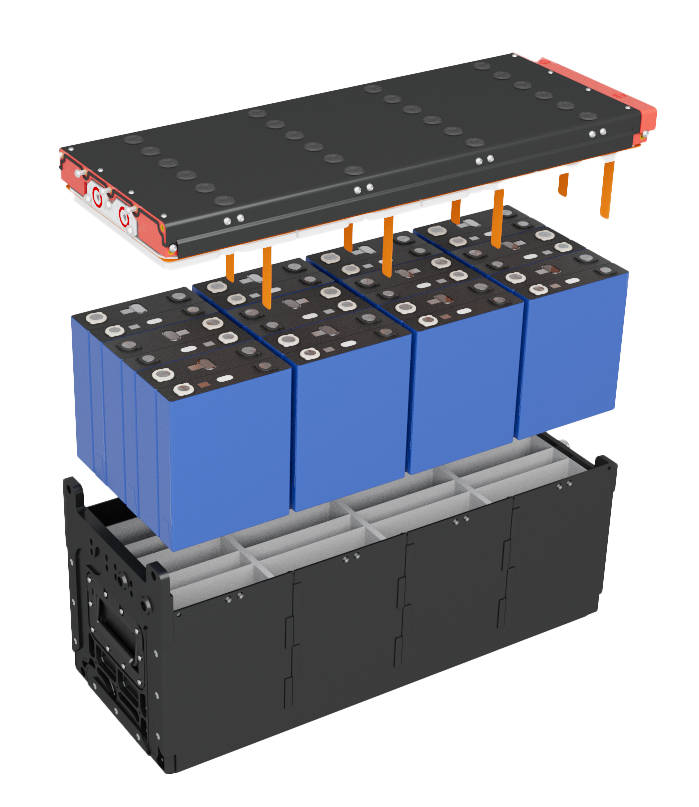Safely Powering Up the Mining Industry
Sandvik’s AVS 4.0 battery module represents the cutting edge in electrification technology for the mining industry. Boasting increased power, unparalleled reliability and exceptional safety features, it is set to drive sustainability, efficiency and profitability for mining companies around the world.
SAFETY, RELIABILITY AND increased performance are the core tenets behind Sandvik’s new AVS 4.0 battery module set to power the next generation of electrification in the mining industry. But convincing new clients to take the leap demands extensive testing to fully establish confidence in adopting battery-powered technologies.
Brian Huff, VP of New Technology and Innovation at Sandvik’s Load and Haul Division, concedes that getting customers comfortable with battery technology is one of the biggest hurdles. “They have valid safety concerns, especially when a burning EV appears on the news. They don’t want fire hazards underground.”
However, Sandvik’s fourth-generation battery module has been purpose-built for the mining industry. ”While some competitors use fragile automotive-style batteries, our design is rugged and we’ve made them modular for safer and easier service in the field,” Huff says. “We’ve also opted for lithium-iron phosphate chemistry that is safer and less volatile, allowing more passive protection features to be effective.”
Huff adds that batteries designed for automotive use are just one monolithic thing: “If you put that into mining equipment and have a problem, you must replace the entire thing, which can be costly and difficult to manage. Our battery packs consist of 16 individual modules, so you can slide a module out and easily insert a replacement.”
Underground mining is focused on uptime, with intense pressure to fix problems in situ. Huff says, “These batteries are designed to be serviced safely in the field. Arc flash has been addressed by having 40V modules and drawer-style connections to avoid contact with the conductors. The new module is robust and environmentally hardened, allowing safe and reliable underground transport.”
The durability of the AVS 4.0 has been proven by its outstanding performance in the UL 2580 standard tests that evaluate batteries for electric vehicle use in North America. The extreme tests included intense shock, mechanical vibration, thermal stress, environmental exposure and cell penetration.
The AVS 4.0 battery module has about 36 percent more energy capacity, a substantial increase compared to the previous generation. “From a performance perspective, machines can run longer before recharging. This is primarily thanks to utilizing the latest generation of battery cells. With this higher energy density, we can run larger machines like the TH665B, TH550B and LH518B 36 percent longer between battery swaps. The increased capacity also increases the charge acceptance, allowing faster downhill speeds and improved efficiency,” Huff says.
DEPENDING ON THE mine, usage and other variables, the battery modules will last, on average, three years in a typical application. While that may initially sound low, the reality is that these batteries are continually in use, either charging or actively powering heavy machines—it is comparable to driving a car 250,000 miles in a year.
“A lot of our competition is chasing the idea of fast charging. This requires the infrastructure to provide a large underground power supply and 15-30 minutes of downtime. It also diminishes battery life and generates more heat. Our Sandvik machines can drop a battery off and pick up a fully charged one in less than five minutes, so the operator doesn’t have to sit and wait,” he says.
Because AVS 4.0 forgoes fast charging, the resulting benefit is that the battery lifespan increases through slower charging. Huff adds, “Charge time can be as short as one hour, but we encourage customers to charge as slowly as possible to meet the cycle. This slow-charge approach also means less power infrastructure is required at the mine.”
Along with implementing the next generation of battery cells, Sandvik has redesigned its battery management system. This safety feature monitors every cell’s temperature and voltage to ensure everything is within operational range. “Because of the ongoing global semiconductor issue, we were driven to be more creative in the components selected to avoid possible supply chain problems. The outcome was a battery management system for improved reliability and function compared to previous designs,” he says.
Sandvik 4.0 AVS Battery module
Sandvik´s new, improved battery module is designed to be even better for manufacturing and quality control, allowing usage of the advanced technologies.
Designed for mining:
1. Top assembly containing battery monitoring system, busbars, cooling plate and other components to complete the robust waterproof housing.
2. Latest technology in LFP cells which are fully encapsulated to dissipate heat and reduce vibration.
3. Rugged housing protects the cells, distributes coolant and allows for safe handling of the module.
Coinciding with the official launch of the AVS 4.0 in late 2023, Sandvik will open its new state-of-the-art production line in Camarillo, California. Specifically designed to produce the new battery module, the factory will employ robotics and other automated processes to help increase production throughput and be more cost effective. By the end of the year, a facility will also be built in Malaysia to help support growth in Asia, Australia and other regions.
“Since 2015, we’ve been fully engaged in the mining market, developing batterypowered equipment from the ground up. We’ve always referred to what we were doing as ‘making the market’ because there wasn’t a lot of battery electrification when we started Artisan Vehicles in 2010. We’re at the forefront of getting the market to move in that direction and are now gaining traction,” says Huff.
He concludes by saying that the new design and production line will grow the capacity in terms of meeting market demand: “Right now, battery equipment supply is outstripped by demand. Sandvik has the largest market share of battery equipment and machinery, so we must secure that advantage over our competitors. I’m confident that we will succeed.”

/https%3A%2F%2Fsolidground.sandvik%2Fwp-content%2Fuploads%2F2023%2F05%2Fmodule-high-res_Frilagd.png)


/https%3A%2F%2Fsolidground.sandvik%2Fwp-content%2Fuploads%2F2023%2F05%2Fth665b_001.jpg)
/https%3A%2F%2Fsolidground.sandvik%2Fwp-content%2Fuploads%2F2023%2F05%2FLH518iB_03437.jpg)
/https%3A%2F%2Fsolidground.sandvik%2Fwp-content%2Fuploads%2F2023%2F05%2Fmodule-high-res_Frilagd.png)
/https%3A%2F%2Fsolidground.sandvik%2Fwp-content%2Fuploads%2F2023%2F05%2FADLA230201_060.jpg)
/https%3A%2F%2Fsolidground.sandvik%2Fwp-content%2Fuploads%2F2022%2F12%2FADLA211207_070_2500px.jpg)
/https%3A%2F%2Fsolidground.sandvik%2Fwp-content%2Fuploads%2F2022%2F08%2FADLA211214_059.jpg)
/https%3A%2F%2Fsolidground.sandvik%2Fwp-content%2Fuploads%2F2021%2F04%2FKiruna_132_1600x750-1.jpg)
/https%3A%2F%2Fsolidground.sandvik%2Fwp-content%2Fuploads%2F2021%2F04%2FLH518B-Front-Left2_1600x750.jpg)
/https%3A%2F%2Fsolidground.sandvik%2Fwp-content%2Fuploads%2F2021%2F09%2FTH550B-24m-heading-swap0000_1600x570.jpg)
/https%3A%2F%2Fsolidground.sandvik%2Fwp-content%2Fuploads%2F2020%2F08%2FLH514BE_1600x570.jpg)
/https%3A%2F%2Fsolidground.sandvik%2Fwp-content%2Fuploads%2F2020%2F08%2FSustainability-Electric_1600x570.jpg)
/https%3A%2F%2Fsolidground.sandvik%2Fwp-content%2Fuploads%2F2020%2F05%2FA10-underground_1600x570.jpg)